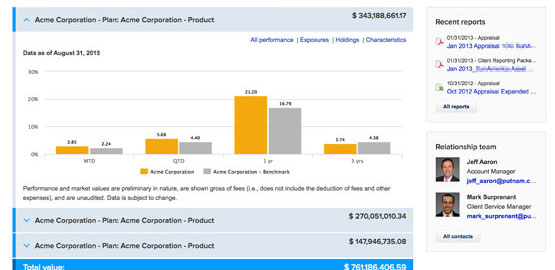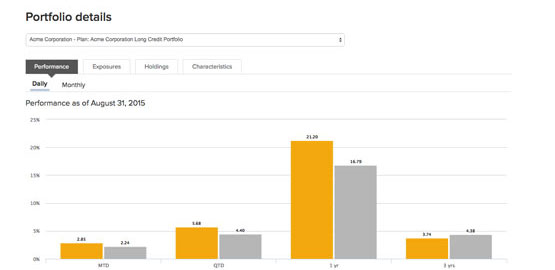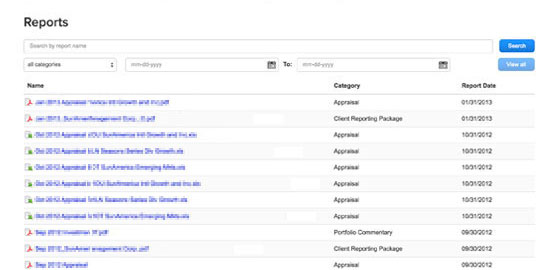- For franchised U.S. auto dealers, consolidation and the e-commerce imperative could mark the biggest changes to the industry’s structure, possibly ever.
- We could see outperformance for stocks of well-positioned companies, including those within the small-cap equity universe.
- We strive to identify emerging leaders that have the flexibility to adapt and the vision to excel in the changing landscape.
Over the past two decades, publicly traded franchised auto dealers in the United States have not offered a fertile hunting ground for growth investors. More recently, however, some of these businesses seem to be shifting into a higher gear. Management teams have laid out a variety of approaches that, if successfully executed, could lead to an inflection point for industry growth. With that, we could see outperformance for stocks of well-positioned companies, including those within the small-cap equity universe.
A history of headwinds
The auto dealership industry is highly fragmented. Publicly traded dealers represent approximately 6% of new car sales volumes and 2.5% of used car volumes. In the past 20 years, organic revenue growth has been uninspiring, with the exception of the post-global financial crisis (GFC) recovery. In that euphoric period, U.S. auto sales climbed to a peak of 17.5 million units in 2016. During that time, most company executives simply opted to increase balance sheet leverage to dole out dividends and/or implement stock buybacks.
A difficult stretch began for the group after the 2016 peak, featuring multiple headwinds to growth. These included a cyclical sales plateau and secular threats such as the rise of ride-sharing services and the development of electric vehicle (EV) technologies. We also saw erosion in the dealer profit pool due to the emergence of online businesses that facilitated price transparency and even end-to-end vehicle transactions. For franchised auto dealers, organic growth disappeared, vehicle gross profits declined, valuation multiples collapsed, and the stocks languished.
Management teams have laid out a variety of approaches that, if successfully executed, could lead to an inflection point for industry growth.
This period of underperformance, which was followed by Covid-19 disruptions, required dealers to rethink their strategies if they were to defend their market shares and potentially return to growth. Within just the past 18 months, we’ve heard companies touting different approaches. Some are leaning on industry consolidation, others are expanding used-car-only dealerships, and several are building their own omnichannel offerings to compete with e-commerce upstarts.
For franchised auto dealers, consolidation and the e-commerce imperative could mark the biggest changes to the industry’s structure, possibly ever. As this happens, we expect that over time we will see the performance of their stocks become less correlated with total U.S. vehicle sales. In this new environment, varying dealer strategies should drive divergent fundamental results with a few potentially emerging as key winners. As such, it is important to consider investment opportunities in this space.
Business cycles and shifting models
Of course, cyclicality remains a key consideration given that fundamental results for auto dealers have historically been tied to cycles in the U.S. auto sales seasonally adjusted annual rate (SAAR). Following the GFC, companies strove to reduce their dependence on vehicle sales by growing higher-margin finance and insurance (F&I) and parts and service (P&S) segments. Even as volumes recovered however, the industry saw continued erosion of already razor-thin profit margins on vehicle sales, offsetting gains in ancillary services. More recently, pandemic-related factors drove significant gross margin expansion in 2020, aided by record-high vehicle prices. Continued supply disruptions and positive cyclical tailwinds in 2021 have kept margins elevated for longer than expected. But we do not believe these results mark a permanent step-change higher in the dealers’ profitability.
The secular bear thesis
Irrespective of cyclical forces, three themes have dominated the secular bear thesis in recent years. They highlight looming threats to revenues and profits for the traditional franchised dealer group but might overestimate the risks and underappreciate the opportunity.
Growth in online transactions will accelerate pressure on vehicle gross profit margins across all channels due to better price transparency. We believe this is inevitable. It amplifies the need to analyze company-specific strategies for scaling volume on vehicle sales and diversifying their revenue mixes into higher-margin profit pools. Traditional dealers that succeed here might find e-commerce a boon to their businesses.
EV penetration will shrink the parts-and-service profit pool because EVs contain fewer moving parts and require less maintenance. We believe this is likely. However, we also believe the serious threat of EV penetration is at least a decade away. In the meantime, rising vehicle complexity should actually benefit P&S profits for dealers.
Increasing availability and adoption of autonomous mobility services will displace personal vehicle ownership. We believe this trend will also move more slowly than expected. In our view, the ultimate scope of impact will be limited to urban areas where vehicle sales have already been falling for years.
A look at new growth strategies
In the past 18 months, franchised auto dealers have touted different approaches to growth, all of which involve large capital investments.
We believe companies that choose to grow their used-only dealership footprints could potentially capture more volume. However, this approach to growth is the least appealing to us as we believe earnings growth is likely to be hampered by continued erosion in gross profit per unit.
We expect consolidation to accelerate, as several public dealers look to deploy their balance sheets, and as challenges continue to mount for sub-scale operators that tend to have fewer levers to grow their ancillary F&I and P&S segments. Disciplined acquisition strategies could create meaningful value.
Brick-and-mortar auto dealers have responded with increased urgency to the rapid rise of Carvana, a pure-play online used-vehicle business. Individual approaches to e-commerce should help drive differentiated results over the next few years. However, we believe online capabilities will eventually become table stakes for auto dealers, as we’ve seen in the retail industry. What is not well understood is that legacy dealers may be well positioned to succeed online.
Traditional dealers may have an edge with e-commerce growth
We believe traditional dealers have unique advantages over the pure-play online used-only businesses. They have easier access to inventory due to consumer trade-ins on new vehicle purchases, access to off-lease returns, and certified pre-owned branding. In addition, traditional dealers can leverage their existing vehicle reconditioning capacity, and are better positioned to capture the higher-margin P&S business.
For those dealers that get e-commerce right, they could realize the step-function change in growth and returns to scale not experienced in decades.
In our view, some digital platform launches from traditional auto dealers have breathed new life into the e-commerce bull thesis. These online platforms are designed to become full-featured venues to buy and sell both used and new vehicles, get financing and insurance, and eventually even have parts and services delivered to the home. Importantly, some of them are being positioned to capture new buyers and grow market share, as opposed to websites simply intended to serve existing customers online. For digital platforms, the reach and density of their parent companies’ physical dealer networks can be a significant advantage, which is a big motivator driving several management teams’ enhanced focus on acquisitions.
Identifying the right emerging leaders is key
In the short term, we believe demand for both new and used vehicles will remain strong. While the timeline for resolving supply-side challenges remains uncertain, eventually new car availability and normalized pricing on used cars should aid access and affordability. For now, consensus is that inventory should improve and lead to a more normal profit environment in 2022 and a fully normalized one in 2023. In the meantime, the deterioration in vehicle sales margins should be partially offset by a recovery in the higher-margin P&S business, as we see an increase in vehicle miles traveled. A potential long-term positive is that vehicle manufacturers could exercise more inventory discipline, potentially translating to structurally higher prices and thus more margin dollars at the dealers going forward. And for those dealers that get e-commerce right, they could realize the step-function change in growth and returns to scale not experienced in decades.
Today, more mature industries are experiencing disruptive change. For such times, we strive to identify emerging leaders that have the flexibility to adapt and the vision to excel in the changing landscape.
328508
As of 12/31/21, Carvana was not a holding in Putnam Small Cap Growth strategy.
Mention of individual securities should not be considered a recommendation or solicitation to purchase or sell the securities. Any securities mentioned are not necessarily held by Putnam for all client portfolios. It should not be assumed that any investment in these securities was, or will prove to be, profitable, or that the investment decisions we make in the future will be profitable or equal to the investment performance of securities referenced herein.
This material is provided for limited purposes. This material is a general communication being provided for informational and educational purposes only. It is not designed to be investment advice or a recommendation of any specific investment product, strategy, or decision, and is not intended to suggest taking or refraining from any course of action. The opinions expressed in this material represent the current, good-faith views of the author(s) at the time of publication. The views are provided for informational purposes only and are subject to change. This material does not take into account any investor’s particular investment objectives, strategies, tax status, or investment horizon. Investors should consult a financial advisor for advice suited to their individual financial needs. Putnam Investments cannot guarantee the accuracy or completeness of any statements or data contained in the material. Predictions, opinions, and other information contained in this material are subject to change. Any forward-looking statements speak only as of the date they are made, and Putnam assumes no duty to update them. Forward-looking statements are subject to numerous assumptions, risks, and uncertainties. Actual results could differ materially from those anticipated. Past performance is not a guarantee of future results. As with any investment, there is a potential for profit as well as the possibility of loss. Diversification does not guarantee a profit or ensure against loss. It is possible to lose money in a diversified portfolio. This material or any portion hereof may not be reprinted, sold, or redistributed in whole or in part without the express written consent of Putnam Investments. The information provided relates to Putnam Investments and its affiliates, which include The Putnam Advisory Company, LLC, Putnam Investment Management, LLC, Putnam Investments Limited®, and Putnam Retail Management.
















